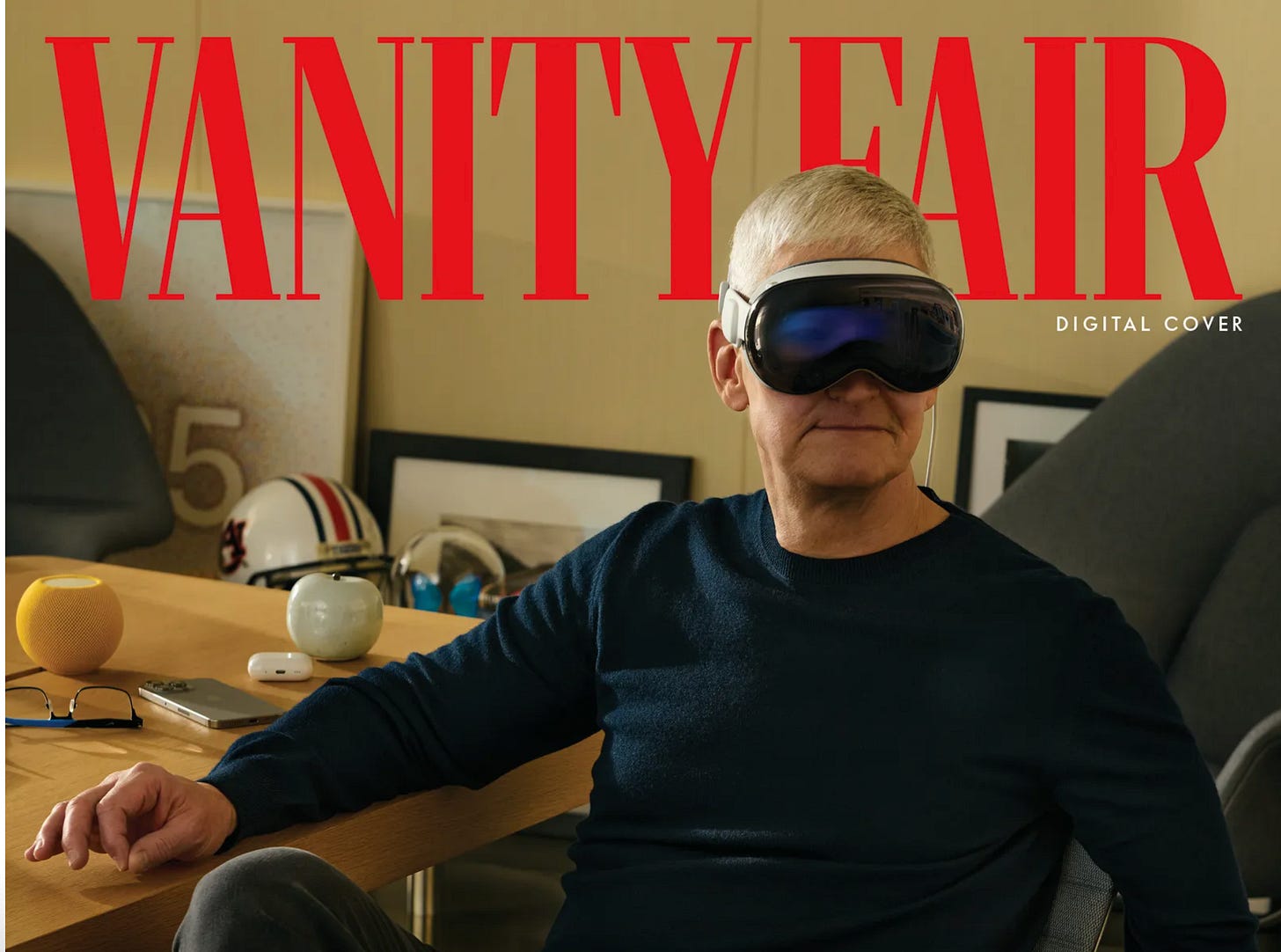🍏 How Apple‘s Vision Pro can succeed
It's more than a product. But what does it need to succeed?
I wrote about a couple of corrections to the original post here.
Apple’s Vision Pro launches tomorrow, on Friday, February 2. And the first reviews have started to come in. Writing in Vanity Fair, Nick Bilton is emphatic about the experience of using the device:
I saw spatial videos for the first time. To say this feature is astounding is an understatement. You actually feel like the person is in front of you and you can reach out and touch them. I saw clips of movies that were 100 feet wide, sharper and clearer than any IMAX. But most importantly, I saw the world around me. That very room. I didn’t feel closed off or claustrophobic.
When I take it off, every other device feels flat and boring: My 75-inch OLED TV feels like a CRT from the ’90s; my iPhone feels like a flip phone from yesteryear, and even the real world around me feels surprisingly flat.
Other reviews worth checking out include this short video by Caroline Milanesi; this overview by Joanna Stern, and a more sceptical view from Nilay Patel.
The Vision Pro is without question a remarkable computer, pushing the limits of today’s (and perhaps some of tomorrow’s) technology.
The question is, can it succeed?
It is more than a product
We have to think of the Vision Pro (or VP, as I’ll refer to it) less as a device and more as a computing platform.
What it means for a computing platform to succeed is very different from a product’s success. A product can succeed by large numbers of sales alone, driven by whatever spirits moved the consumer: think of pet rocks and fidget spinners.
A computing platform is more than that. A platform supports an ecosystem of third parties who also need to make money. The combination of hardware and software which provides an environment for a computer system is the core, and above that sit applications that can be built to do useful things for end users.
A platform is a complex thing. It is part of an ecosystem: the hardware and software synthesis controlled by Apple and a flood of applications, which will be produced by third-party developers. These developers need guidelines, processes, tools and incentives to come onto the platform.
For platforms to succeed, their ecosystems need to make more money (in total) than the platform provider. And despite their trillion-dollar valuations, it’s reasonably clear that Microsoft and Apple have both enabled more revenue for their ecosystems than they have taken. Apple claims that App Store developers made more than $1.1 trillion in 2022. The firm itself had sales shy of $400 billion, about 80% of which were lower margin hardware sales.
In other words, inspecting a device alone, absent the tools, incentives, and access for developers, and how developers will make money tells us very little about the prospects for its persistent success. Platforms, unlike products, can persist for decades: the Microsoft Windows platform has evolved from its roots as the DOS through to Windows, Windows 3.1, Windows 95 and now a cloud-based service.
Things to ignore
One thing is that we shouldn’t be too hidebound by the sales numbers of the product. The Vision Pro will likely become a $1 billion product in the next few quarters. Wall Street analysts reckon 180,000 devices have been sold, which is roughly $600 million.
Nor should we worry too much about kludges in the product’s first version, with one corollary I’ll discuss below. The original iPhone was a breakthrough, jaw-dropping, and compromised. It didn’t have apps. It didn’t have push email. It was beset with poor battery life. It didn’t even have 3G. But it improved, probably beyond our imaginings. The same trajectory awaits the VP.
That the VP is a new form factor shouldn’t a priori scare us off. Headphones could be an instructive market. I first bought a pair of noise-cancelling headphones in 2000. I would often be the only person wearing those Boses on European flights. Today a typical airport is full of people wearing Apple Air Pod Maxs, different Bose over-the-ears, and a smattering of Sony WH-1000s. I even saw someone wearing a pair of Focal Bathys on my last flight.
Price oughtn’t be a concern. The VP is sold out already. Technology is making things cheaper. And, as I wrote in June, the Vision Pro isn’t that expensive for a version 1 product. Headphones show us what the market is willing to pay. A pair of Airpods Max will set you back $549. The Focal Bathys a cool $699. Yet, you can buy a pair of noise-cancelling cans for around $16 on Amazon.



